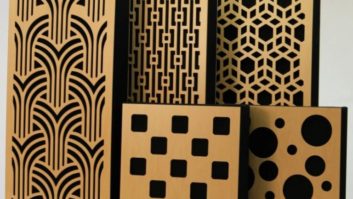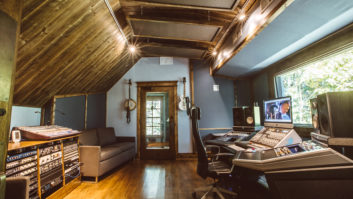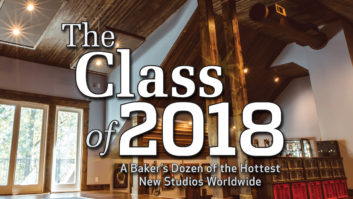Acoustic Geometry and its signature Curve Diffusor exist today because awhile back, John Calder faced a problem in his Minneapolis basement home studio that he had just put together with a business partner. It was an 1906 structure, and the ceiling was relatively high, but sounds were bouncing all around and there were room modes throughout. “It sounded dreadful,” Calder says.
So he called a friend wondering if there were any simple, inexpensive solutions. The friend recommended a few things, some of this and that, and then told him to cut up some columns lengthwise into thirds and put some absorbent material behind them. Make them different sizes, put them on the walls in various spots. “It immediately sounded better,” Calder recalls. “And I’ve been building these things ever since.”
The friend happened to be the late, great studio designer Vincent Van Haaff, whom Calder had worked with at Kendun Recorders in Los Angeles in the 1980s. And the home studio is still standing, serving as one of Calder’s two home bases where he works on many of his prototypes.
“The original Curve Diffusor was a concrete column form, 24 inches in diameter,” Calder recalls. “We bought them from the local concrete supply store in 7-foot lengths and cut them into thirds. Vincent was adamant about the thirds because of his 120-degreee rule. We put something behind them so you don’t get a cavity resonance, then just put them on the wall in all these places. We put a boatload up in this studio; we covered all the ceiling pipes with them, and this studio still sounds great.”
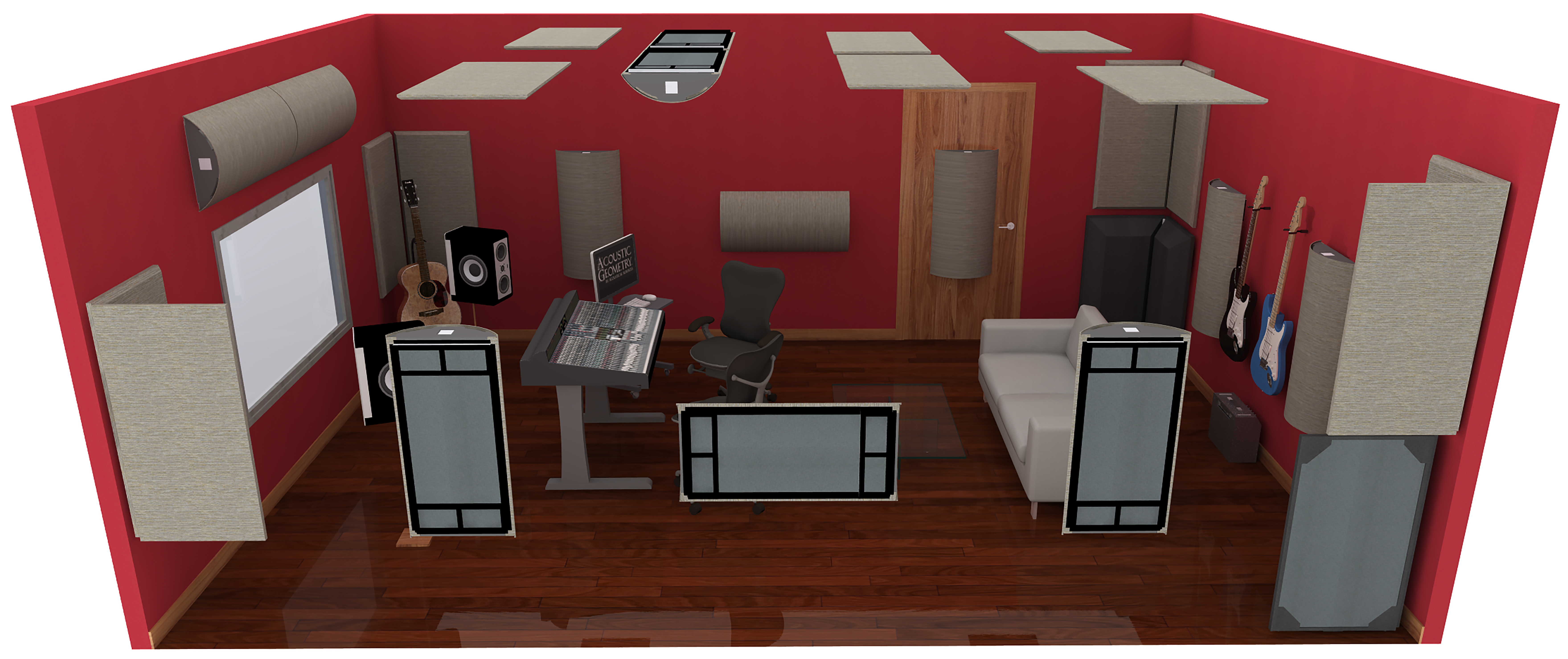
At the time, quadratic residue diffusors, based on principles developed by Manfred Schroeder and incorporated by RPG into all of its products, were all the rage. There were also polycylindrical diffusors in circulation, but those were mostly based on Masonite bent into a curved shape. Calder wasn’t a big fan of either (“Just my personal taste,” he says), so he started researching the curved diffusion more common in the big studios back in the big-band days. A true curve, he found, provided the constant radius he was looking for across all frequencies. And they worked well at first reflection points. In fact, they worked well all over the room.
Around the same time, he met the owners of Acoustical Surfaces, a commercial sound isolation and noise control company based in Minneapolis, and started kicking around the idea of developing a real product. Soon they formed a relationship for Calder to add his Acoustic Geometry brand under the Acoustical Surfaces umbrella.
Installation Stories:
• Acoustic Geometry Keeps Sound in Check at The Church Recording Studio, Dec. 28, 2017
• Acoustic Geometry Cracks the Code at Sound Vault Studios, Aug. 15, 2016
• Acoustic Geometry Brings Orb Recording Studios’ Sound Full Circle, Nov. 18, 2015
“That was in 2011,” Calder says. “The prototypes we made were from the concrete column forms, but they didn’t look so good when you tried to sell them. Then we had some custom laminate tubes made. They were nice and smooth and consistent but they weren’t fireproof and I still didn’t like the way they looked. Plus, I wanted to change the cavity impedance on the Mass-Loaded Vinyl membrane on the back. So we went to aluminum and the steel frame holding the MLV. I also revised the end caps to create the proper impedance differential. We’ve been making these for almost seven years, now on version 2.5, and it seems people are liking them.”
Once the Curve Diffusor was out in the field, Calder realized that it was solid from about 200 Hz out to 8,000 Hz and a little beyond, but needed “help” in the LF absorption range. So he started looking into dedicated low-end absorption. He had been introduced to Ron Sauro and NWAA Labs in Washington State, the largest commercial facility in the country for testing absorption. In 2015 he took 19 version 2 Curve Diffusor prototypes out west for testing, designed for better LF absorption. Then, two years later, based on the Curve LF tests, he designed a dedicated LF absorber with beveled edges, and tested varying the density of the membranes. He came away with the CornerSorber, which works well in conjunction with the Curves.
Related: Acoustic Geometry Unveils CornerSorber Acoustic Bass Management Product, by Matt Gallagher, Sept. 26, 2016
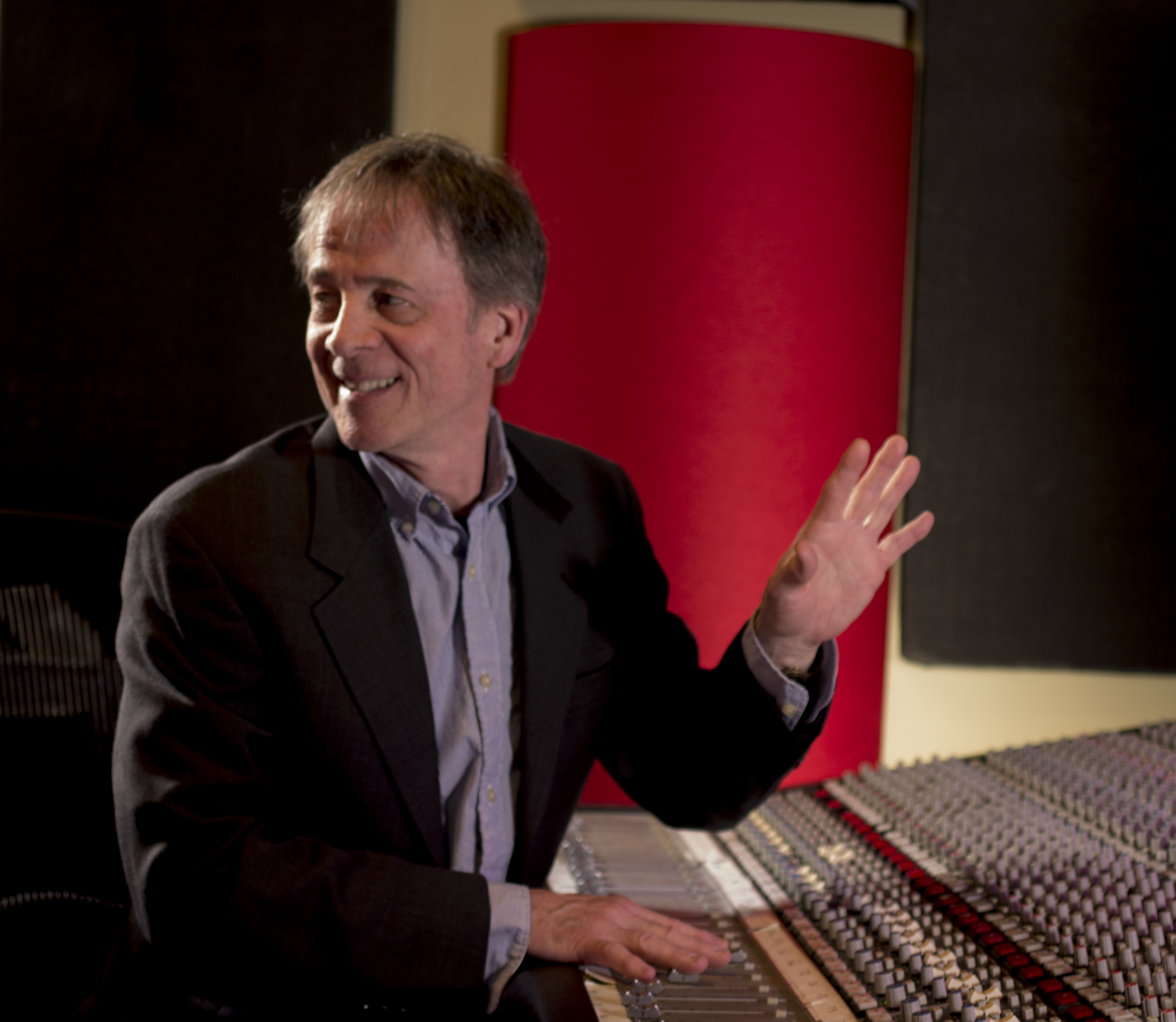
“Membranes are the way to go for LF absorption because they are pressure-based and not velocity based,” Calder says, based on his extensive testing. “Fiber and foam are a velocity products and will work out in the middle of the room as well as anything. But as wavelengths get longer, they aren’t effective at boundaries or in a corner because there’s zero velocity at a boundary. It’s not to say we’ve developed the be-all end-all, but room acoustics is all about timing and phase relationships and LF absorption when you get down to it.”
With two base products in his Acoustic Geometry line, along with panels, door seals and a host of other acoustical products, last year Calder began to put together high-end room packages based on phase-coherent diffusion and absorption. He recommends diffusion at first-reflection points and membrane absorption at the boundaries. He has put together a series of papers and entertaining videos to simplify the principles and process for customers.
“We’re all about making the room better,” Calder says simply. “You’re never going to have a perfect room. Never. The research tells us that your brain is amazing at putting together a sound image. You just have to help it out a little bit.”
Acoustic Geometry • www.acousticgeometry.com
